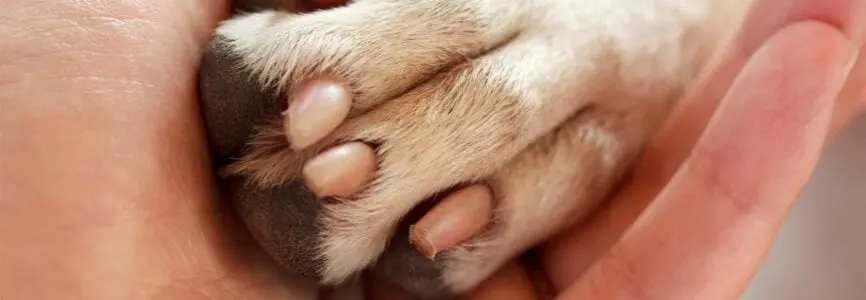Bioethics Forum Essay
On a Radioactive Pig and Pope Francis
“If you look through the red-tinted glass, you will see the radioactive pig,” said the director of animal laboratories at my university–let’s call her Susan–near the start of my tour of the facility. There on a concrete floor, within a steel cage, was a large solitary sow, lying on her side, legs pointed left. I couldn’t see her face, and her breathing was barely detectable. “For obvious reasons,” Susan said, “she doesn’t receive any visits or have any time with other animals. When the research is done, she will be euthanized.”
Next I was directed to another hallway door. Through the window I saw six other pigs locked in individual stalls. A few were standing and some were lying down – none were moving. I could only see their hindquarters (which were large) and the back of one head. “They are here as part of an obesity study,” I was told. Though pigs are highly social animals who require social contact and exercise and thrive with a varied diet, just like we do, these pigs were condemned to isolation and immobility.
Cats and dogs followed. Peering into the tinted glass portal, I saw four tabby cats lying in barren cages; a fifth was out, her question mark tail below me, passing in and out of view. The nearby room with dogs was about the same size as the one for cats – approximately 12 feet by 16 feet – with cages on the long walls and an alley in between. As we approached the window, the dogs erupted in barking. One threw his head back the better to be heard above the others. “Do they ever get adopted out” I asked?
“The dogs you mean?” the professor who accompanied me on the tour—let’s call him Claude—queried. I nodded in agreement. “No. They will be euthanized after the research is finished. But I think someone adopted a chinchilla last week.”
Susan later explained: “We are able to adopt out animals on occasion. However the vast majority of animals are euthanized as the tissues are being used to further the research.”
In addition to the cats and pigs, I had already seen rabbits in cages barely tall enough for their ears and tens of thousands of mice stacked high in plastic shoe-box sized containers–all in cinderblock rooms with no daylight. My senses were by now growing numb, and my thoughts formed slowly. But before we left the dogs, I asked what kind of exercise they received. Susan pointed to a chart on a door that listed each day of the week, the time and type of exercise each dog received, and from whom. There was generally one notation per day per dog, with the duration listed as 15 minutes. “Do the same people who play with them also experiment on them”, I asked? “It is upsetting for dogs when the same trusted person who plays with them also subjects them to painful or frightening experiences.”
Susan tried to assuage my concern: “There is no need to worry about that. We knock them out so they never know. They are usually only here a few months. Then they are euthanized.” An exception however may be the dogs Claude told me about earlier, during a wide ranging conversation in Susan’s office. They are part of a study of the physiological effects of chronic pain – their life span is likely longer than the other dogs at the laboratory.
When I got home, I wrote to thank Susan and Claude for their time and trouble, to praise their obvious professionalism, and tell them I would convey my compliments to the university president and provost when I next saw them. I also asked about the radioactive pig. The next day, I decided to browse on my laptop through Pope Francis’ recent encyclical Laudato Si – On Care for Our Common Home to see if he might have anything illuminating to say about experimentation on animals – what used to be called vivisection. I found the following: “We are not God. . . . and we must forcefully reject the notion that our being created in God’s image and given dominion over the earth justifies absolute domination over other creatures.” And this: “Other creatures are [not] completely subordinated to the good of human beings, as if they have no worth in themselves and can be treated as we wish.” And also: “Every act of cruelty towards any creature is contrary to human dignity.” Pope Francis I realized, like the saint after whom he is named (who preached to the birds and befriended a rabbit) is part of the global, animal protection movement.
It may be the case, as my hosts assured me, that my university’s animal laboratories meet all federally mandated standards for animal care. But what about Pope Francis’s argument that it is wrong to so completely subjugate other animals – beings as sensitive, loving, and family oriented as we are – to a dominion so complete that they are nothing more than specimens to be deployed for the length of a particular experiment and then killed – “euthanized” to employ the euphemism I heard so often on my tour.
No one can expect Northwestern to halt its experiments on animals because of the Pope’s encyclical – or because, according to a recent Gallup poll, most U.S. adults are concerned about the use of animals in experiments. But shouldn’t Francis’s calls for “care” and “dignity” – and our own growing insights into animal sentience and intelligence — prompt a more thorough reflection upon whether the number of animals used in laboratory experiments couldn’t be significantly reduced and their conditions of life improved? Any change in the animal research regime at Northwestern will come too late for the radioactive pig whose contour I can’t get out of my mind, but it may save thousands of future animals from loneliness, boredom, fear, pain and early death.
Stephen F. Eisenman is professor of art history and president of the faculty senate at Northwestern University. He is the author of nine books including The Cry of Nature – Art and the Making of Animal Rights (Reaktion, 2013).
Posted by Susan Gilbert at 07/20/2015 10:16:59 AM |













